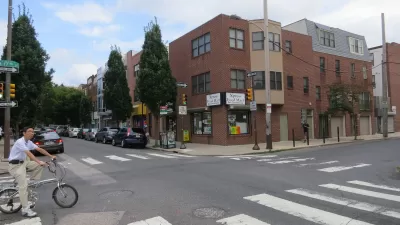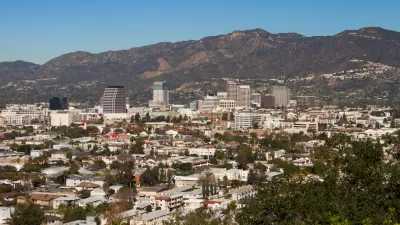The Editorial Board of the New York Times offers perhaps the highest profile support to date for overthrowing the status quo of slow growth and development opposition.

An editorial by the New York Times Editorial Board (noted to represent the opinions of the board, its editor, and the publisher), weighs in on the great debate of the age in planning: how to solve the ongoing housing affordability crisis gripping cities all over the United States.
The editorial says government is the problem for the lack of affordable housing around the country, creating the shortage by preventing construction. The editorial also debunks the notion of building boom in many of the most expensive cities in the country.
Don’t be misled by the construction cranes that punctuate city skylines. The number of housing units completed in the United States last year, adjusted for the size of the population, was lower than in any year between 1968 and 2008. And the problem is most acute in major urban areas along the east and west coasts. Housing prices, and homelessness, are rising across the country because there is not enough housing.
Given this framing, it shouldn't be surprising that the editorial expresses support for the idea of building more housing to help alleviate pressure on the housing market. The editorial says new development in dense urban areas could also create new jobs, reduce carbon emissions, and address inequality.
As its example of a new way of planning things, the editorial showcases Minneapolis, would recently adopted the Minneapolis 2040 Comprehensive Plan, which sets the city on a course to eventually end single-family zoning.
FULL STORY: Americans Need More Neighbors

Study: Maui’s Plan to Convert Vacation Rentals to Long-Term Housing Could Cause Nearly $1 Billion Economic Loss
The plan would reduce visitor accommodation by 25,% resulting in 1,900 jobs lost.

North Texas Transit Leaders Tout Benefits of TOD for Growing Region
At a summit focused on transit-oriented development, policymakers discussed how North Texas’ expanded light rail system can serve as a tool for economic growth.

Using Old Oil and Gas Wells for Green Energy Storage
Penn State researchers have found that repurposing abandoned oil and gas wells for geothermal-assisted compressed-air energy storage can boost efficiency, reduce environmental risks, and support clean energy and job transitions.

Santa Barbara Could Build Housing on County Land
County supervisors moved forward a proposal to build workforce housing on two county-owned parcels.

San Mateo Formally Opposes Freeway Project
The city council will send a letter to Caltrans urging the agency to reconsider a plan to expand the 101 through the city of San Mateo.

A Bronx Community Fights to Have its Voice Heard
After organizing and giving input for decades, the community around the Kingsbridge Armory might actually see it redeveloped — and they want to continue to have a say in how it goes.
Urban Design for Planners 1: Software Tools
This six-course series explores essential urban design concepts using open source software and equips planners with the tools they need to participate fully in the urban design process.
Planning for Universal Design
Learn the tools for implementing Universal Design in planning regulations.
Ascent Environmental
Borough of Carlisle
Institute for Housing and Urban Development Studies (IHS)
City of Grandview
Harvard GSD Executive Education
Toledo-Lucas County Plan Commissions
Salt Lake City
NYU Wagner Graduate School of Public Service





























